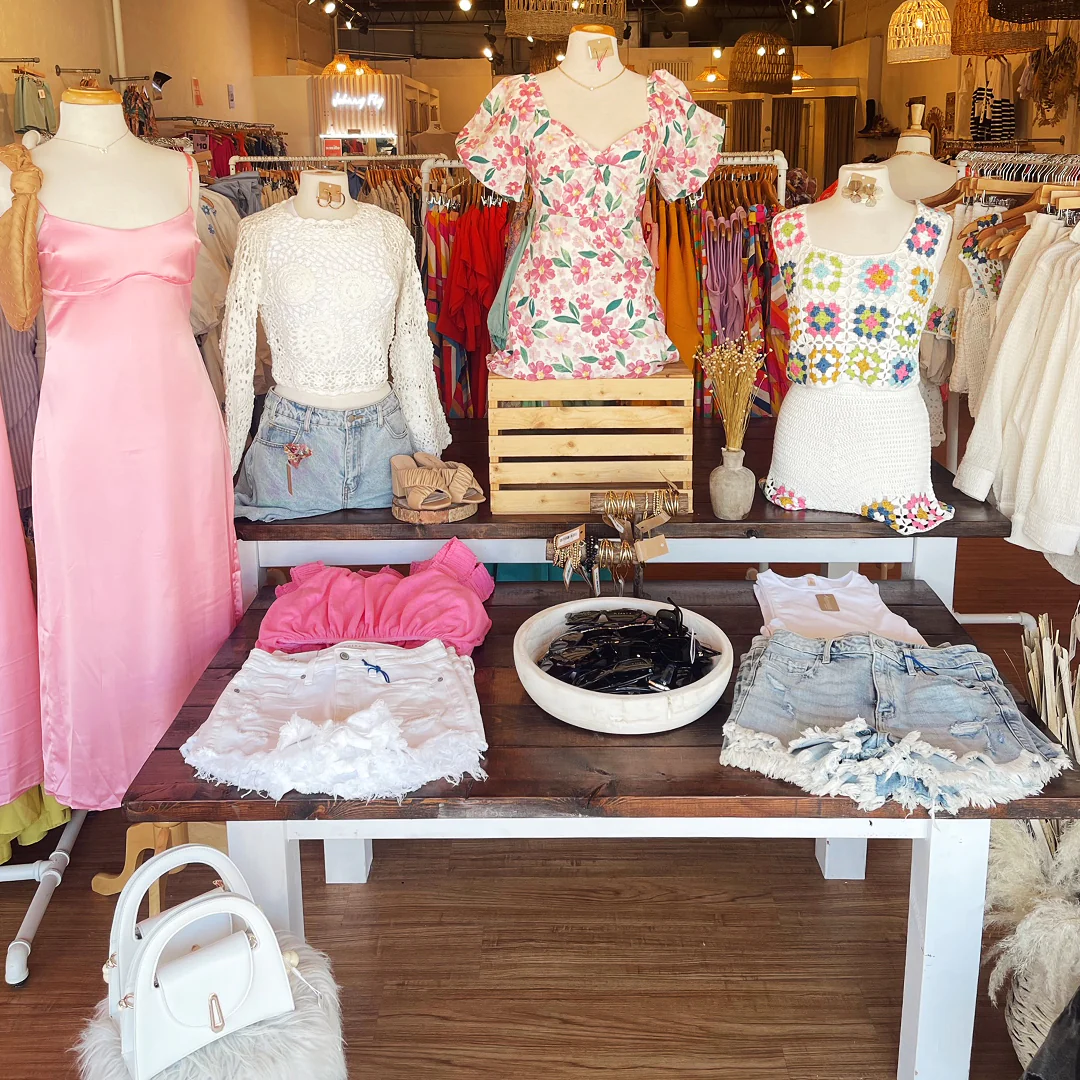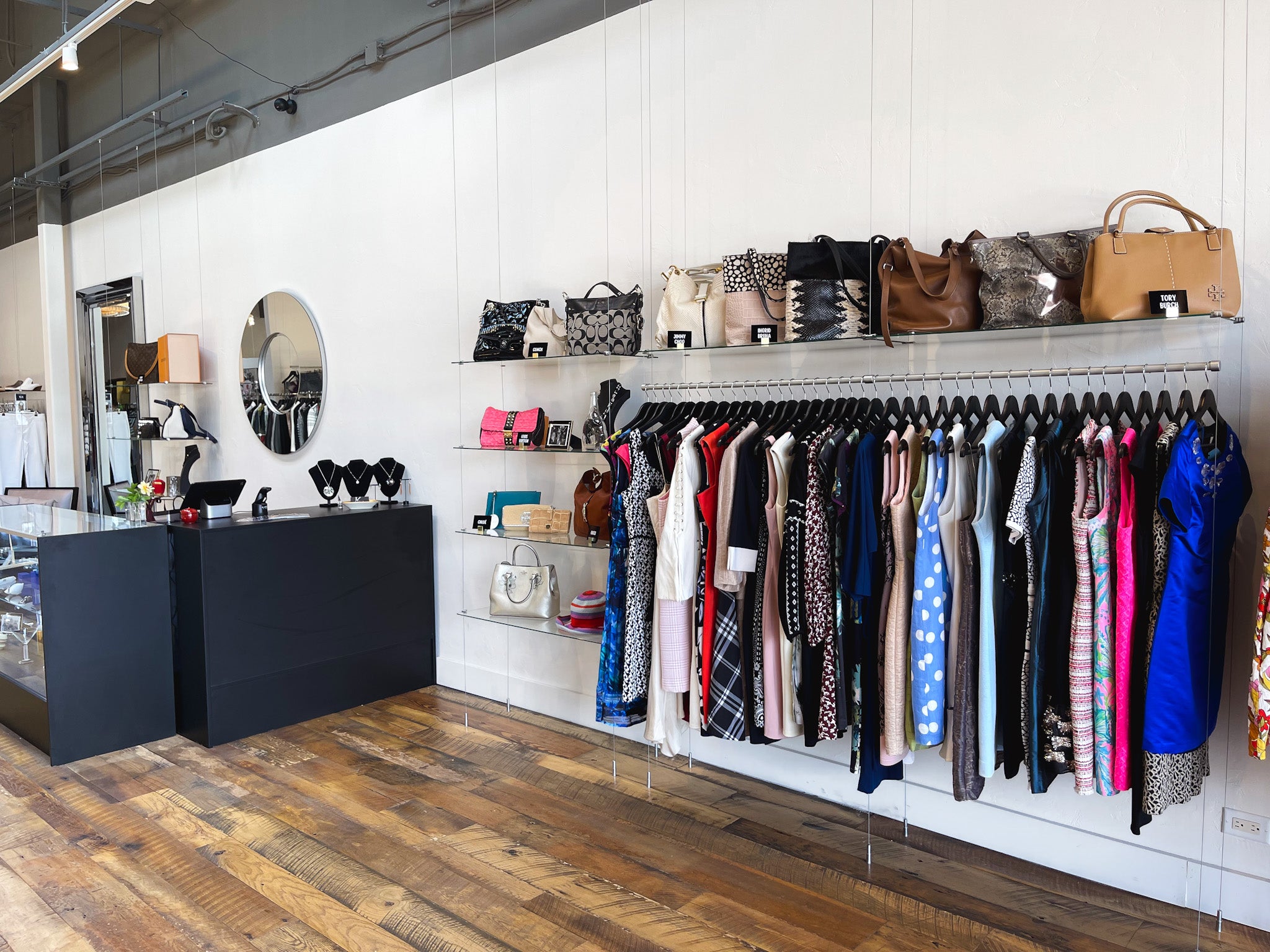A Newbie's Overview to Browsing the Boutique Fashion Scene
Checking Out the Advancement and Impact of Clothes on Modern Style Trends
The evolution of clothes has actually dramatically influenced contemporary fashion patterns, combining historic precedents with advanced advancements. Legendary figures like Coco Chanel and Yves Saint Laurent transformed the garment industry by presenting principles that focus on convenience and accessibility, which remain to resonate today. Technical strides in locations such as 3D printing and clever textiles are redefining design possibilities and consumer experiences (boutique fashion). In addition, the expanding focus on inclusivity and sustainability is reshaping sector standards. As we think about these diverse impacts, one need to doubt exactly how these aspects collectively redefine fashion's function in reflecting and shaping contemporary society.
Historical Style Influencers
In the tapestry of fashion background, specific numbers have left an enduring mark, shaping the patterns and designs that define whole eras. Coco Chanel, an advanced designer, redefined ladies's style by introducing comfy, elegant garments that left from restrictive corsets.
Elsa Schiaparelli is an additional critical number, renowned for her progressive designs that included surrealist art, collaborating with Salvador Dalí to produce wayward items that challenged traditional visual appeals. Her ingenious use color and strong patterns resounds in modern fashion. Yves Saint Laurent, on the other hand, equalized haute couture with prêt-à-porter collections, bringing runway styles to the masses and setting a criterion for modern-day ready-to-wear lines.
These visionaries, to name a few, not only reinvented style in their times but also set withstanding fads that resonate in today's fashion industry, supplying a structure upon which contemporary developers remain to innovate and develop. Their traditions emphasize the relevance of creativity and daring in fashion's ever-evolving story.
Technical Innovations in vogue
Among the vibrant landscape of the fashion business, technical advancements stand at the forefront of innovation, reshaping how designers create and customers involve with style. The assimilation of 3D printing has actually reinvented style procedures, allowing designers to try out complex structures and lasting products that were formerly unthinkable. This innovation helps with rapid prototyping, reducing waste and expediting manufacturing times.

Smart fabrics, embedding modern technology into materials, are additionally transforming the market. Technologies like self-cleaning and temperature-regulating textiles offer improved capability and convenience. Wearable technology, integrating attributes like fitness tracking and interaction, includes a brand-new dimension to fashion, combining aesthetics with practicality.
Social Changes and Design
As technical advancements continue to reshape the fashion business, cultural changes are equally influential, redefining style and customer choices. Over the last few years, the surge of social media sites systems has actually increased the circulation of international style patterns, enabling diverse cultural influences to exist side-by-side and merge. This electronic interconnectivity has actually assisted in the fast exchange of ideas, resulting in a more comprehensive and eclectic interpretation of design that mirrors the multifaceted nature of contemporary culture.
Social recognition and admiration have actually triggered designers to draw ideas from a more comprehensive spectrum of historical and ethnic contexts, incorporating standard motifs with modern appearances. This blend has resulted in style that resonates with a wider target market, promoting a sense of identification and belonging across various demographics. Furthermore, the increasing need for personalization has actually driven brand names to offer personalized choices, enabling customers to express originality while showing their cultural heritage.
Additionally, shifting social values have actually impacted style, with inclusivity and diversity coming to be central styles. The industry has actually begun to accept versions and influencers of different body kinds, ethnic backgrounds, and sex identities, tough conventional elegance standards. This makeover underscores the power of social changes fit the future of style, as style comes to be a much more authentic expression of collective and personal identification.
Sustainability and Modern Style
While the garment industry remains to advance, the crucial for sustainability has actually come to be significantly immediate, influencing contemporary layout practices. This shift intends to address environmental worries and moral considerations, resulting in a reevaluation of standard manufacturing approaches. Designers are now integrating sustainable products, such as natural cotton, recycled polyester, and eco-friendly fabrics, into their collections, decreasing the environmental impact of style. The surge of slow-moving style, which emphasizes quality over quantity, encourages consumers to invest in ageless pieces as opposed to transient patterns.
Additionally, modern layout is defined by its development in decreasing waste and advertising circularity. This method not just reduces environmental effect but additionally improves the social duty of fashion residences.

Future Trends in vogue

Sustainability will certainly continue to be a driving pressure in shaping future style patterns. The sector is progressively adopting green materials and moral production approaches, responding to an expanding consumer need for accountable techniques. Developments such as bio-fabricated products and closed-loop recycling systems are readied to redefine exactly how clothing is created and consumed, minimizing environmental effect while keeping style and top quality.
Cultural shifts, consisting of the rise of inclusivity and variety, will certainly also play a crucial role. As society comes to be more conscious of social concerns, fashion is anticipated to come to be a platform for expression and basics modification. Developers will likely concentrate on creating collections that show a more comprehensive series of identifications and experiences, championing representation and availability.
Verdict
The evolution of clothes dramatically impacts modern fashion patterns, where historic impacts combine with contemporary designs. Secret figures like Coco Chanel and Yves Saint Laurent have actually redefined design, while technical innovations such as 3D printing and smart textiles broaden innovative opportunities. Social changes in the direction of inclusivity and sustainability urge brands to accept and embrace honest methods variety. This continuous development emphasizes style's duty as a mirror to social worths and technical improvement, recommending a future abundant with innovation and inclusivity.
The evolution of garments has actually significantly influenced modern style fads, merging historic criteria with sophisticated innovations.In the middle of the vibrant landscape of the fashion industry, technical innovations stand at the forefront of innovation, improving exactly how developers develop and consumers involve with fashion.While the fashion industry proceeds to advance, the imperative for sustainability has ended up being progressively immediate, influencing contemporary design methods. As sustainability ends get redirected here up being embedded in modern layout, it leads the means for a much more responsible and conscious fashion market.
The advancement of garments dramatically influences modern-day style patterns, where historical impacts combine with contemporary styles.